Hearing begins in the cochlea, where hair cells (red) detect and amplify sound vibrations and relay the information to the brain via auditory nerve cells (green).
Image courtesy of Sonja Pyott, University of North Carolina.
April 14, 2025
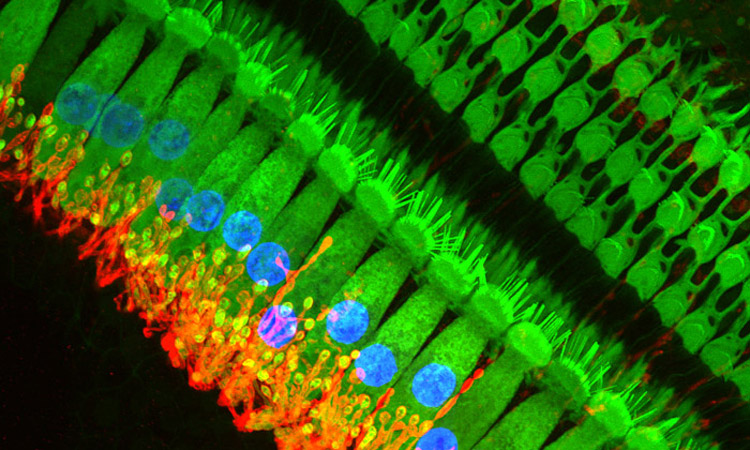
Hearing begins in the cochlea, where hair cells (red) detect and amplify sound vibrations and relay the information to the brain via auditory nerve cells (green).
Image courtesy of Sonja Pyott, University of North Carolina.
April 7, 2025
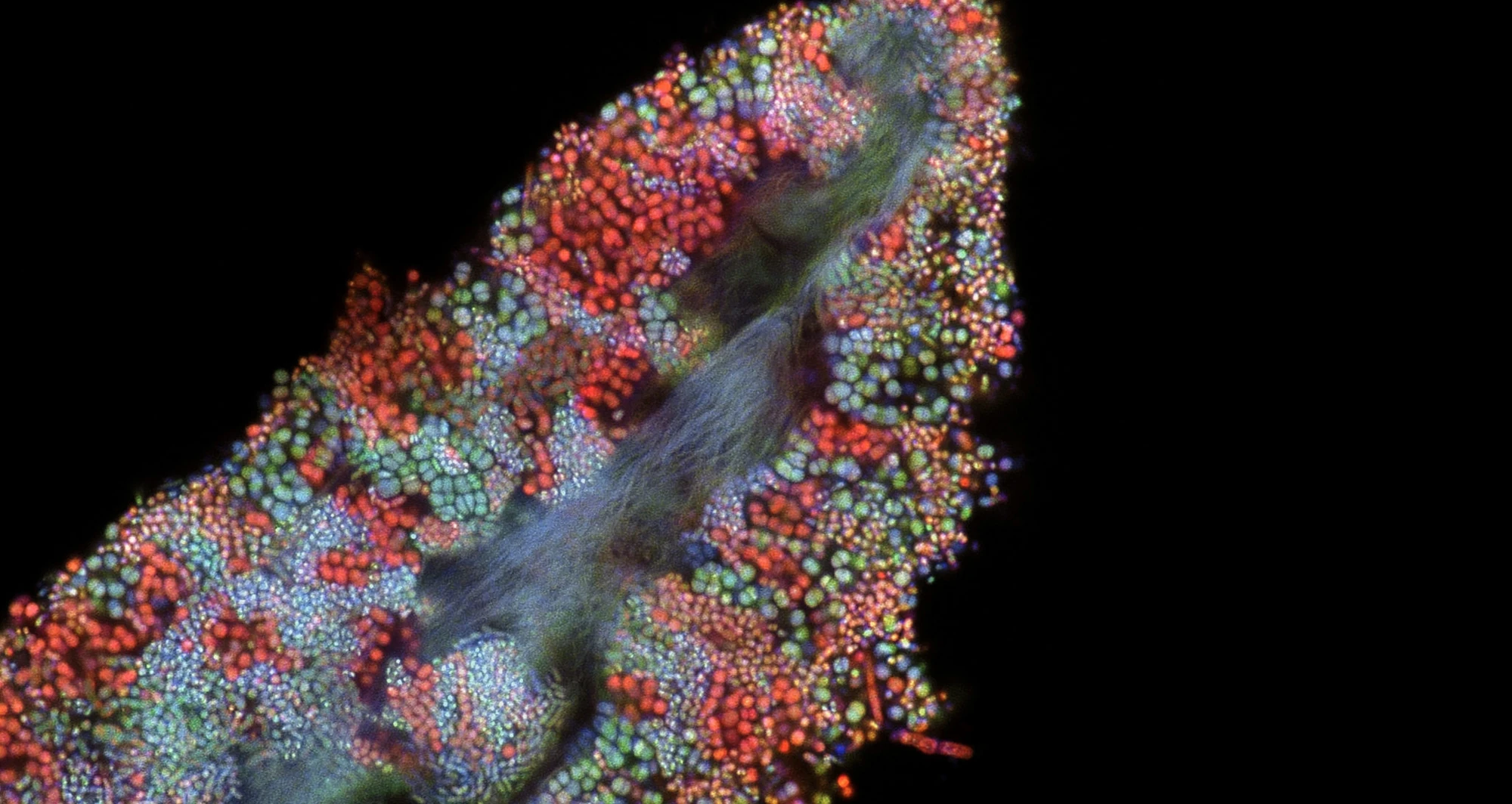
A confocal micrograph depicts tongue epithelial cells adjoined by several bacterial species to form a complex biofilm on the tongue’s surface. The oral cavity has the second largest and most diverse microbiota after the gut.
Image courtesy of Tagide deCarvalho, University of Maryland, Baltimore County.
April 1, 2025
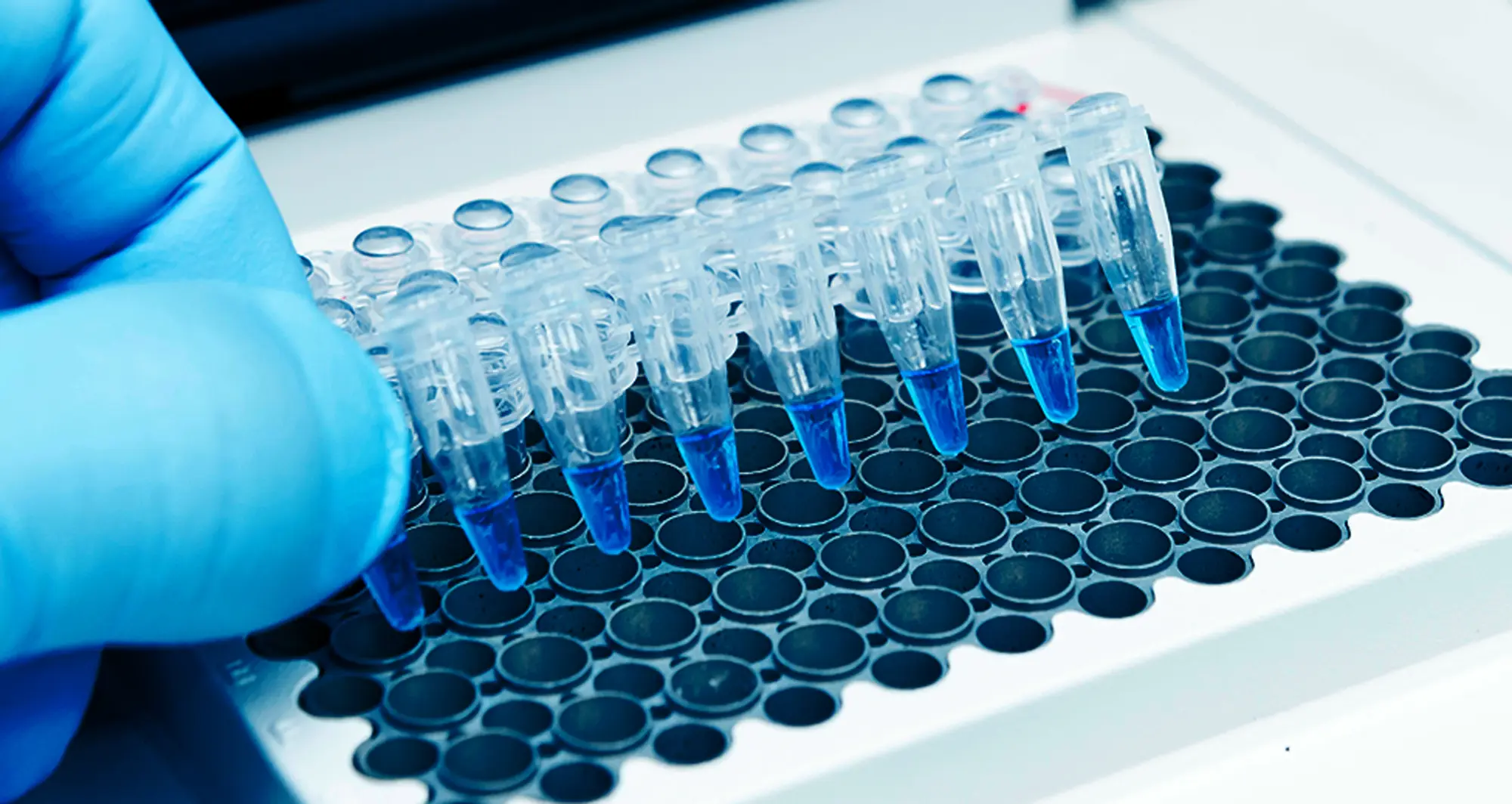
A recent story in The New York Times describes how new and changed federal policies pose long-term risk to science and the economic gains it creates.
Highlighted in the article is the story of Hudson Freeze, PhD, director of the Sanford Children’s Health Research Center, who as an undergraduate student at Indiana University was involved in the discovery of heat-resistant microbes.
Those microbes would prove critical to the development of polymerase chain reaction (PCR), a DNA replication tool that is now ubiquitous in genetic science and beyond.
April 1, 2025
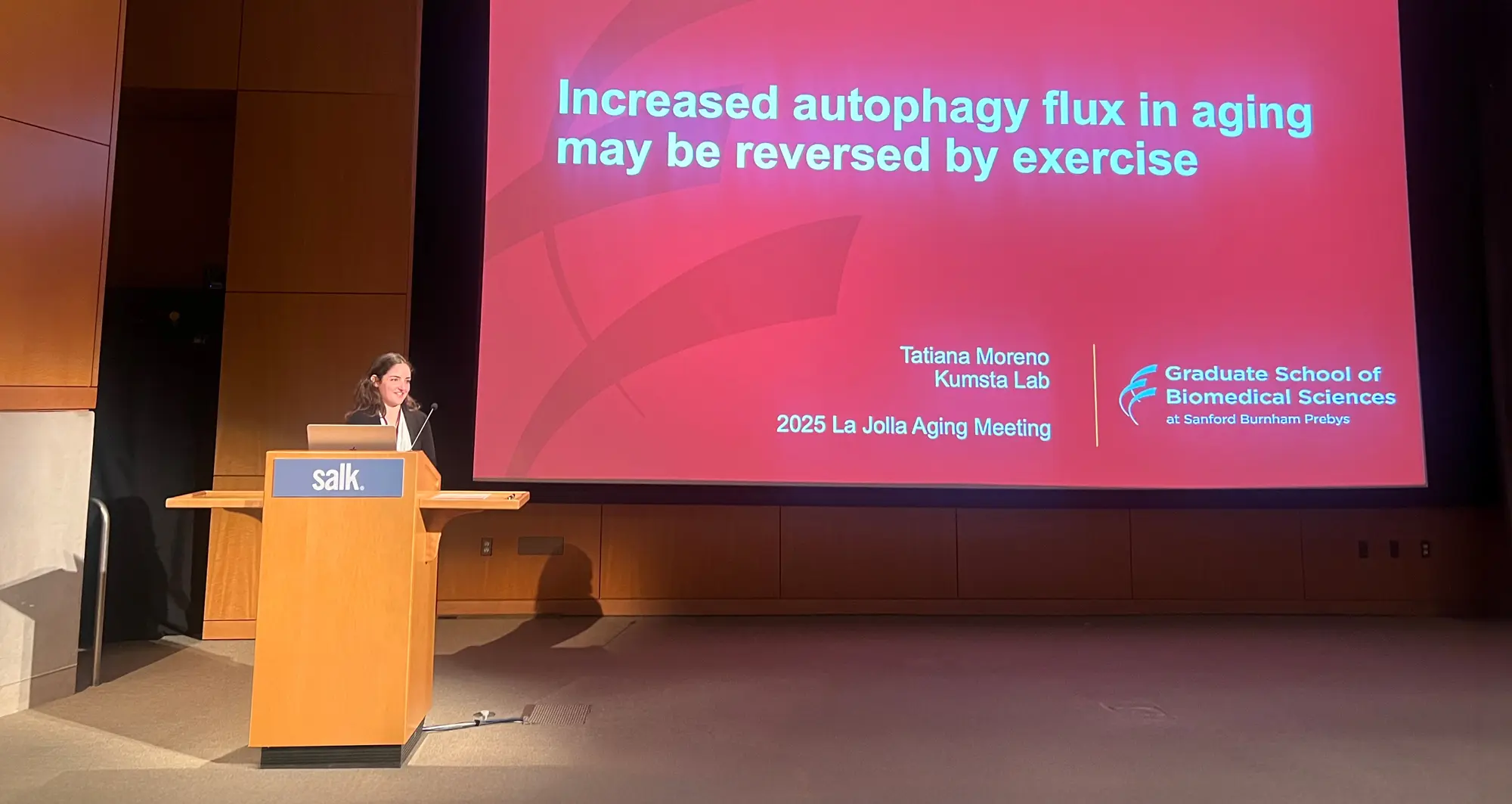
Two scientific meetings in late March brought together researchers studying aging and its implications for disease
Scientists from San Diego and across the United States gathered March 26-27, 2025, to discuss the latest advancements in aging research. The NIH-funded San Diego Nathan Shock Center, a collaboration among the Salk Institute for Biological Studies, Sanford Burnham Prebys and the University of California San Diego, opened the two scientific meetings with its 2025 symposium on Wednesday, March 26, at the Salk Institute in the Conrad T. Prebys Auditorium in La Jolla.
The event focused on the center’s primary research area, “The Heterogeneity of Aging.” Just as people and organisms age at different rates, scientists have demonstrated that tissues also age at their own speeds – even some cells within tissues age at a unique pace. This phenomenon, known as heterogeneity of aging, is of great interest to researchers as it may hold clues for how to develop interventions that enable people to lead healthier lives as they age.
The San Diego Nathan Shock Center Symposium convened 193 in-person attendees and another 113 virtual participants over Zoom.
Shanshan Yin, PhD, a postdoctoral associate in the lab of Peter D. Adams, PhD, director and professor in the Cancer Genome and Epigenetics Program at Sanford Burnham Prebys, presented an update on her research regarding breast cancer and aging. She discussed results from investigating changes in gene expression and immune system activity in breast cancer tumors as mice age, leading to increased cancer incidence. Yin was awarded a San Diego Nathan Shock Center pilot grant in 2023.
The 8th annual La Jolla Aging Meeting was held on Thursday, March 27, also in Salk’s Conrad T. Prebys Auditorium. The event brought together 257 in-person attendees and featured mostly short talks from San Diego-based postdoctoral fellows and students researching the biology of aging.
Kelly Yichen Li, PhD, a postdoctoral associate in the lab of Kevin Yip, PhD, interim director of the Center for Data Sciences and professor in the Cancer Genome and Epigenetics Program, delivered a talk regarding her work on zombie-like senescent cells that persist but no longer divide like most normal cells. Li discussed her work exploring cell types in samples of liver tissue. She discovered differences in cell composition and gene expression based on the age of the samples. Li and her collaborators continue to work on methods to identify senescent cells in tissue samples, which would accelerate research in the field.
Tatiana Moreno, a graduate student in the lab of Caroline Kumsta, PhD, associate dean of Student Affairs in the Graduate School of Biomedical Sciences and assistant professor in the Center for Cardiovascular and Muscular Diseases, detailed her studies regarding aging and the body’s cellular recycling system, a process called autophagy. Moreno discussed her findings measuring autophagy in blood samples drawn from human volunteers of various ages, including results regarding the effects of a 12-week exercise program.
Rouven Arnold, PhD, a postdoctoral associate in the Adams lab at Sanford Burnham Prebys, presented his work seeking to better understand how aging can lead to a loss of the unique cellular identity that allows cells to carry out specialized functions in different organs. Arnold focused on the HIRA protein, one of the histone chaperones responsible for helping to build spools out of histones used to hold DNA like a thread. Following studies of HIRA’s role in the aging liver, his results suggest that HIRA plays a protective role to preserve liver cell identity and promote healthy aging in the liver.
Alessandra Sacco, PhD, professor and director of the Development, Aging and Regeneration Program in the Center for Cardiovascular and Muscular Diseases at Sanford Burnham Prebys, and dean of the institute’s Graduate School of Biomedical Sciences, was a cohost for both events. Adams was a cohost for the La Jolla Aging Meeting.
About the San Diego Nathan Shock Center
The San Diego Nathan Shock Center (SD-NSC), led by Gerald Shadel, PhD, Audrey Geisel Chair in Biomedical Science and professor in the Molecular and Cell Biology Laboratory at the Salk Institute, was established in the fall of 2020 with the overall goal of understanding the heterogeneity of aging in order to allow development of personalized interventions to increase the number of years of healthy life.
To this end, the center provides three novel scientific Research Resource Cores to develop new human cell models of aging and enable the integrated analysis of molecular, cellular and tissue heterogeneity. The SD-NSC also supports and advocates basic biology of aging research in general through the development, training and mentoring activities of a Research Development Core and robust outreach efforts. All of these activities are accomplished via a consortium of three premier research institutions on the La Jolla Research Mesa: the Salk Institute for Biological Studies, Sanford Burnham Prebys and the University of California San Diego.
Alessandra Sacco serves as director of the SD-NSC Research Development Core and Peter Adams serves as co-director of the SD-NSC Heterogeneity of Aging Core.
March 31, 2025
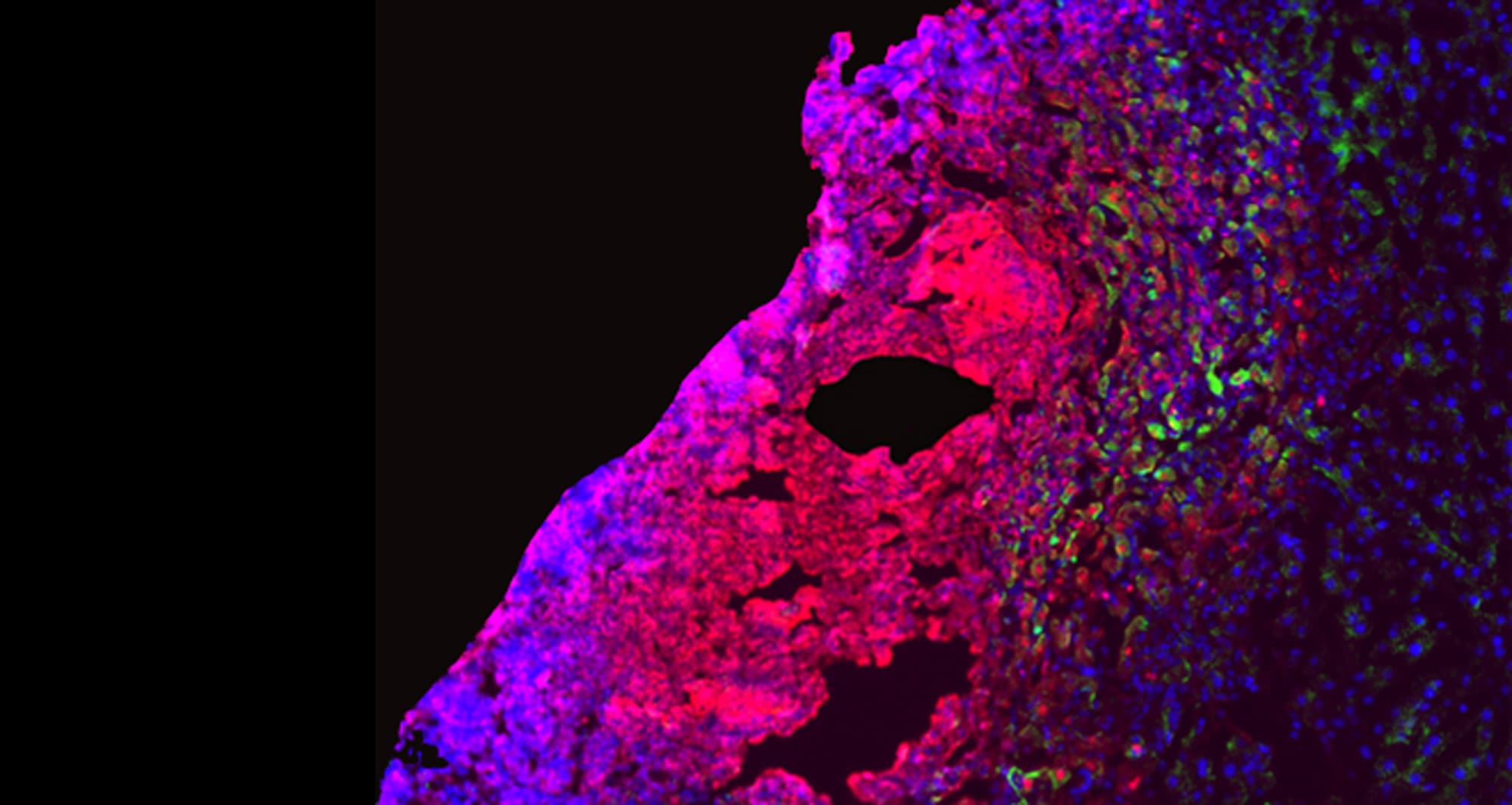
In this micrograph of a liver lesion from a mouse infected with Chromobacterium violaceum, some cells are dying (red) while other healthy cells (blue) are activating a protein (green) to fight the bacteria.
Image courtesy of Edward Miao at Duke University and Vivien Maltez at University of North Carolina at Chapel Hill.
March 24, 2025
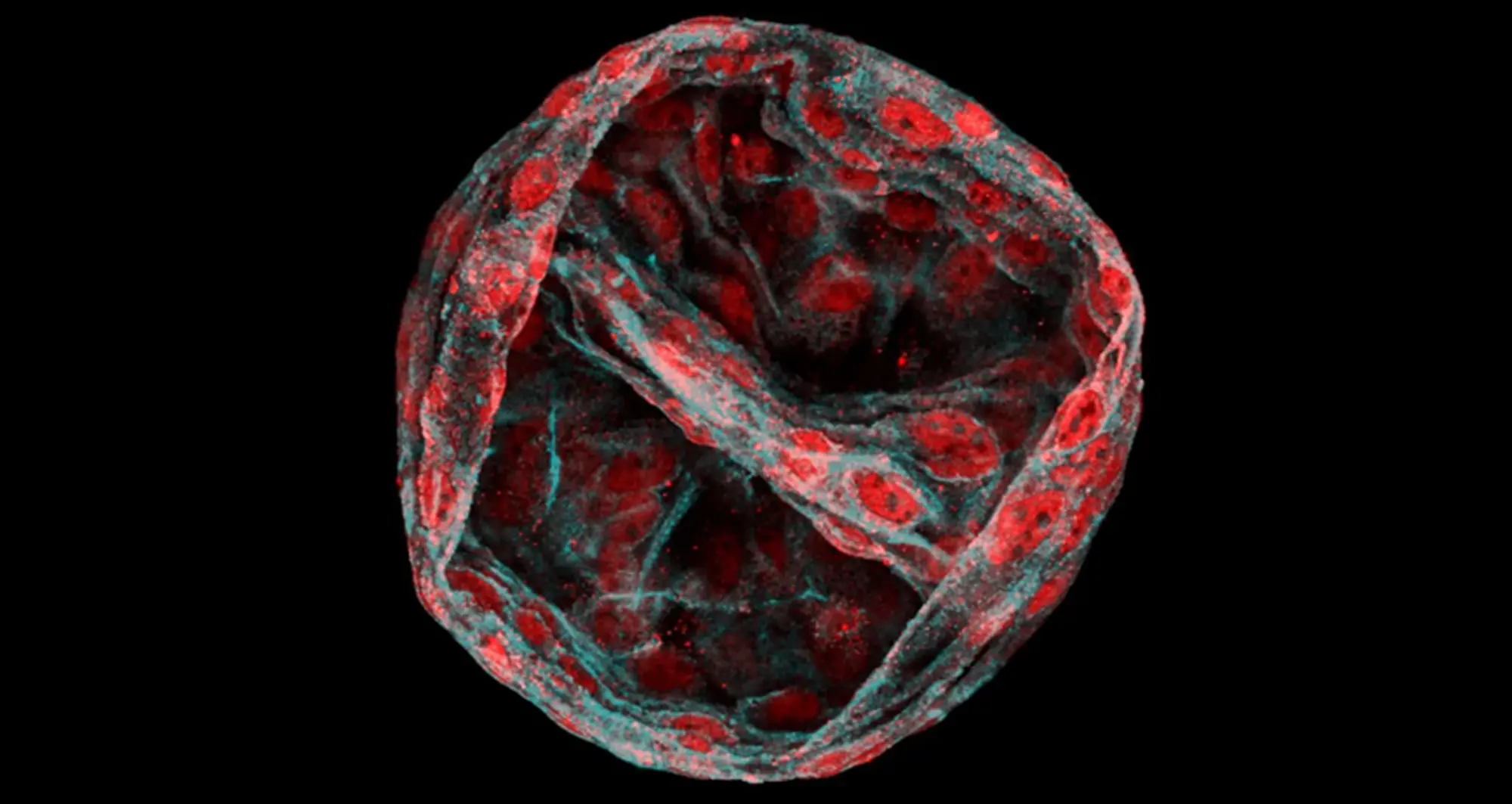
This is an organoid comprised of human pluripotent colon cells with the metabolic enzyme MTHFD2 stained in red. Scientists have discovered that metabolic enzymes, involved in a cell’s energy production, also perform jobs like orchestrating cell division.
Image courtesy of Natalia Pardo Lorente at Centro de Regulación Genómica in Spain.
March 17, 2025
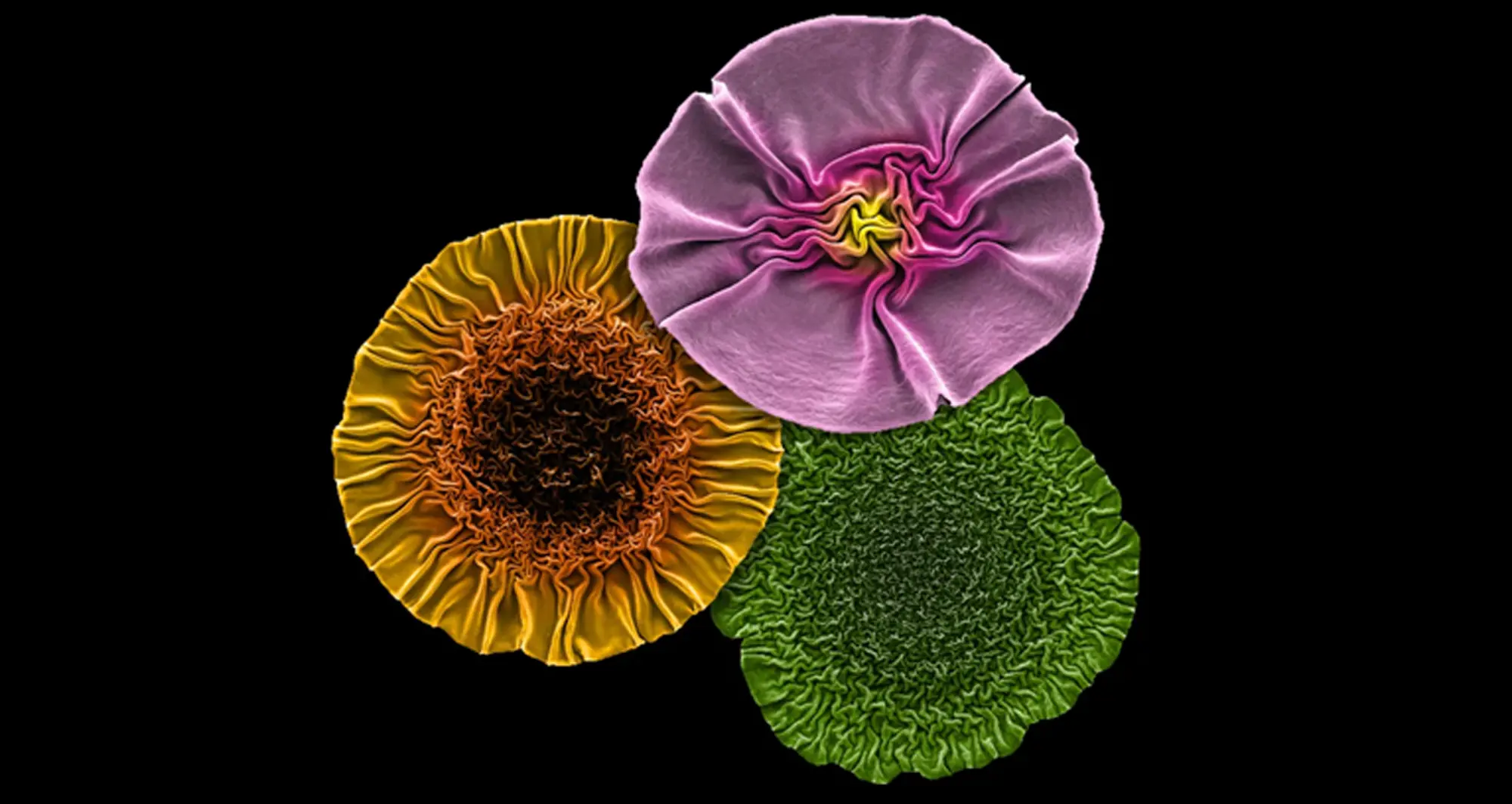
These crinkly blooms are groups of bacteriophages, viruses that infect bacteria. After researchers treated phages so they could be viewed under a microscope, the viruses spontaneously formed into these structures, which are just 2/10ths of millimeter wide. By comparison, 1 millimeter is comparable to a sharp pencil point.
Image courtesy of McMaster University, Canada.
March 12, 2025
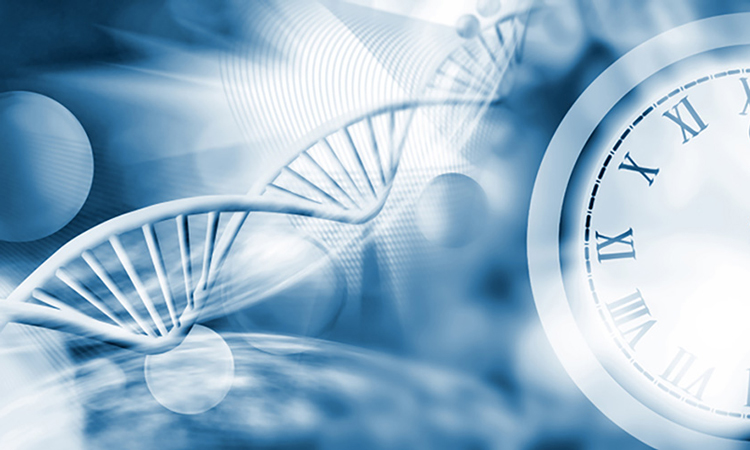
There are two exciting opportunities in March for individuals interested in learning more about aging research conducted in San Diego and across the country.
San Diego Nathan Shock Center Symposium
On Wednesday, March 26, 2025, the San Diego Nathan Shock Center will hold its annual symposium on “The Heterogeneity of Aging” at the Salk Institute in the Conrad T. Prebys Auditorium and on Zoom. Speakers and topics for the event include:
More information is available on the symposium website.
Register online to attend by Monday, March 17, 2025.
La Jolla Aging Meeting
The La Jolla Aging Meeting follows the next day on Thursday, March 27, 2025. It also will be held at the Salk Institute in the Conrad T. Prebys Auditorium. The event will include scientific presentations and networking with a focus on postdoctoral researchers and students.
Nathan Le Brasseur, PhD, director of the Robert and Arlene Kogod Center on Aging at the Mayo Clinic, will present the keynote address.
More information is available on the meeting website.
Register online to attend by Monday, March 17, 2025.
Alessandra Sacco, PhD, professor in the Center for Cardiovascular and Muscular Diseases at Sanford Burnham Prebys, and dean of the institute’s Graduate School of Biomedical Sciences, is a cohost for both events. Peter D. Adams, PhD, director and professor in the Cancer Genome and Epigenetics Program at Sanford Burnham Prebys, is a cohost for the La Jolla Aging Meeting.
About the San Diego Nathan Shock Center
The San Diego Nathan Shock Center (SD-NSC), led by Gerald Shadel, PhD, Audrey Geisel Chair in Biomedical Science and professor in the Molecular and Cell Biology Laboratory at the Salk Institute, was established in the fall of 2020 with the overall goal of understanding the heterogeneity of aging in order to allow development of personalized interventions to increase the number of years of healthy life.
To this end, the center provides three novel scientific Research Resource Cores to develop new human cell models of aging and enable the integrated analysis of molecular, cellular and tissue heterogeneity. The SD-NSC also supports and advocates basic biology of aging research in general through the development, training and mentoring activities of a Research Development Core and robust outreach efforts. All of these activities are accomplished via a consortium of three premier research institutions on the La Jolla Research Mesa: the Salk Institute for Biological Studies, Sanford Burnham Prebys and the University of California San Diego.
Alessandra Sacco serves as director of the SD-NSC Research Development Core and Peter Adams serves as codirector of the SD-NSC Heterogeneity of Aging Core.
March 10, 2025
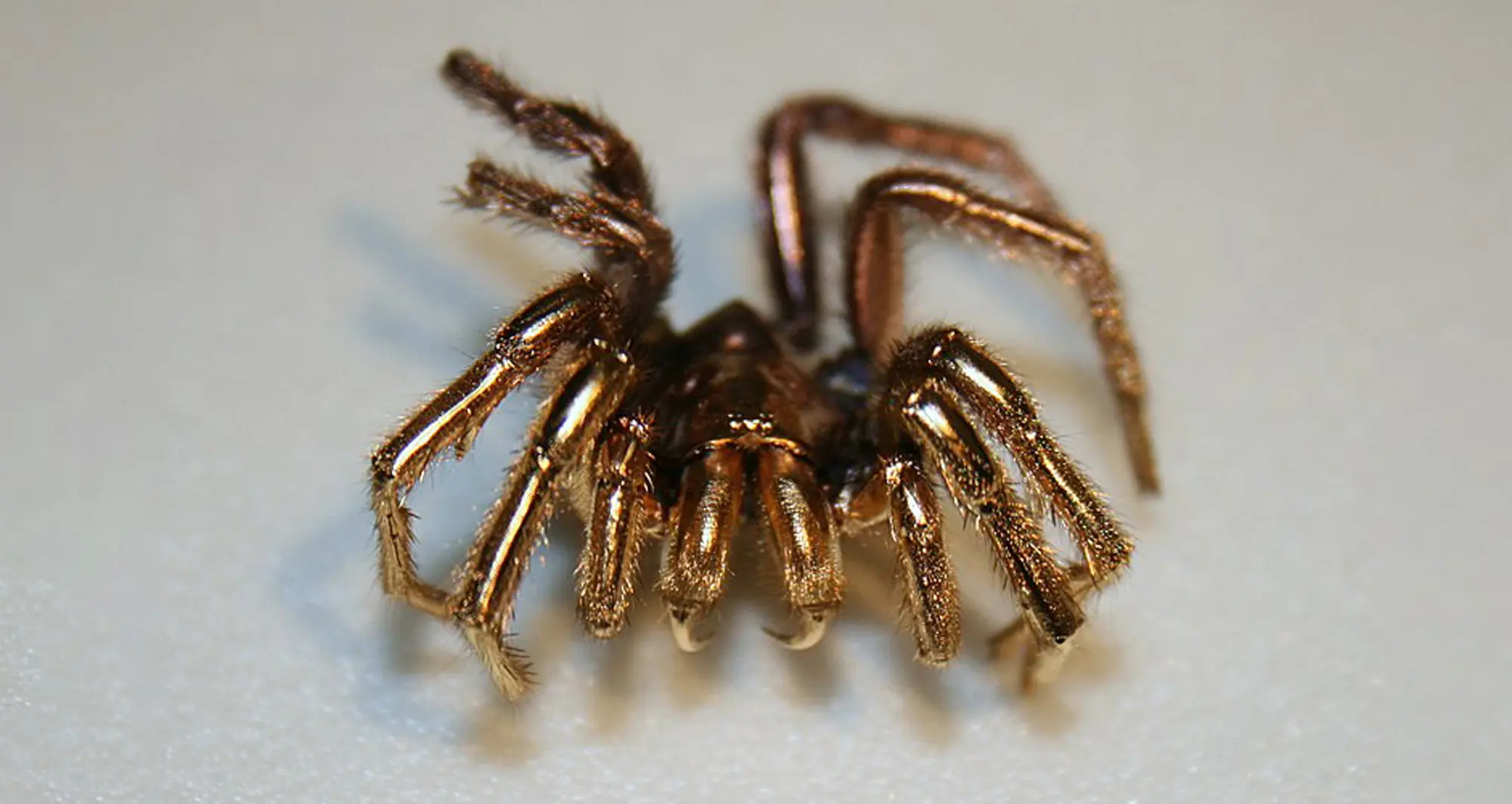
A spider is coated in gold to prepare it as a specimen for scanning electron microscopy. Gold is used because of its high electrical conductivity, which enables the electron beam to interact with a specimen more effectively.
Image courtesy of Steve Gschmeissner.
March 3, 2025
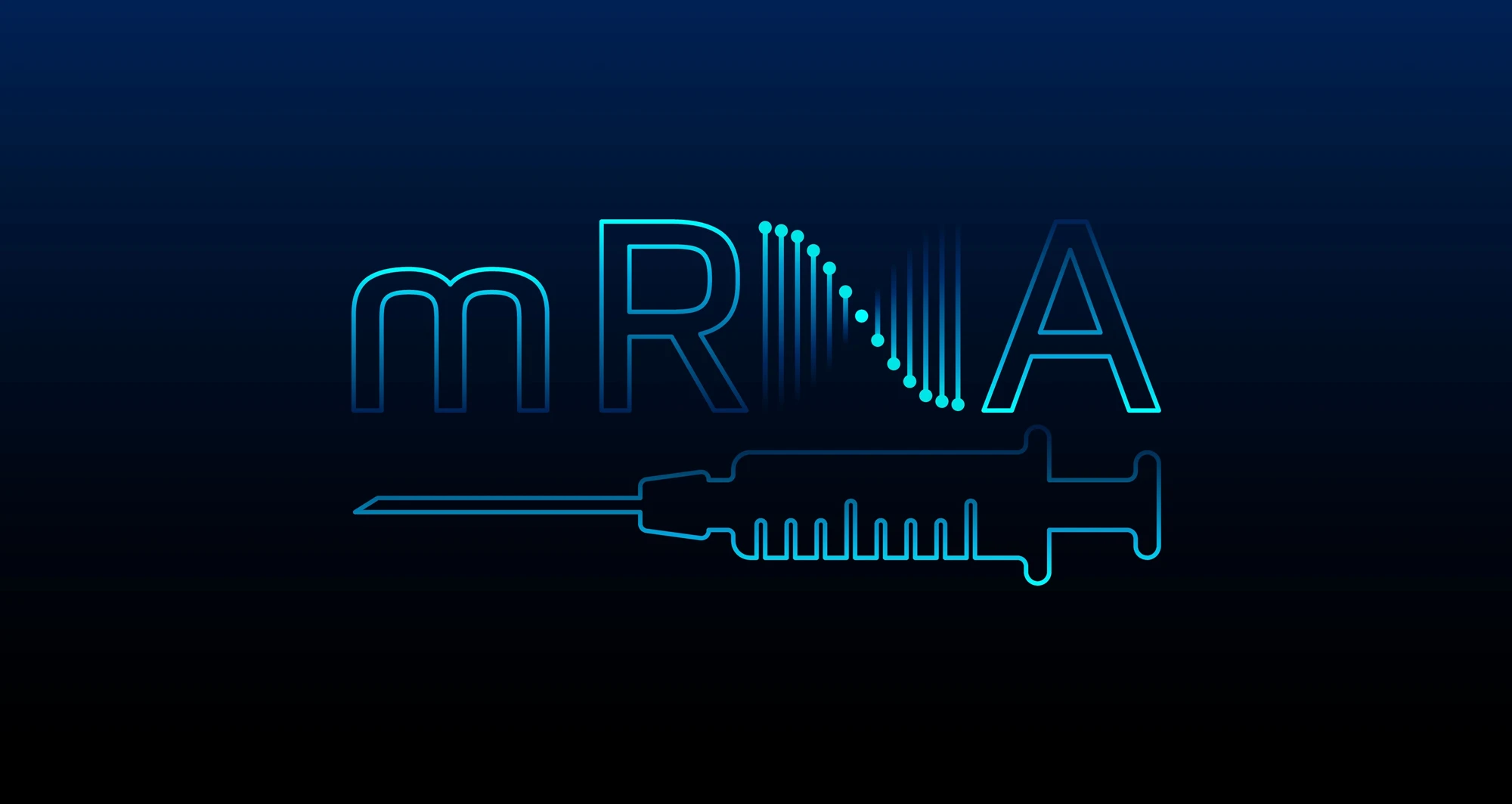
New study analyzes how the set of proteins in blood plasma changes following vaccination and infection, and may contribute to improving vaccine development
While many people have received similar mRNA vaccinations to protect against COVID-19, the strength and duration of the resulting immunity varies. It remains unclear exactly what causes individuals’ immune systems to react differently to the COVID-19 vaccine and other immunizations.
To get a better understanding of this phenomenon, scientists at Sanford Burnham Prebys, Seer Inc. and Federal University of Rio Grande do Sul examined the type and amount of virtually all proteins in the blood plasma of 12 volunteers as they received two doses of the Pfizer-BioNTech mRNA COVID-19 vaccine. The research team published the results of this pilot study in the Journal of Proteome Research on February 4, 2025, detailing the first attempt to comprehensively explore how an mRNA vaccine changes the mix and concentration levels of proteins known as the proteome.
The scientists were able to study a set of more than 3,000 proteins, within which they found a set of proteins that changed following each dose of vaccine. The authors also found a set of proteins that could distinguish between research participants who had or had not tested positive for COVID-19 in the months after receiving the second dose of vaccine.
While more research is needed with larger groups of research volunteers, this pilot study suggests that studying proteome changes can increase our understanding of how individuals’ immune systems react differently to immunization. Future findings from additional experiments may reveal methods for developing more effective vaccines.
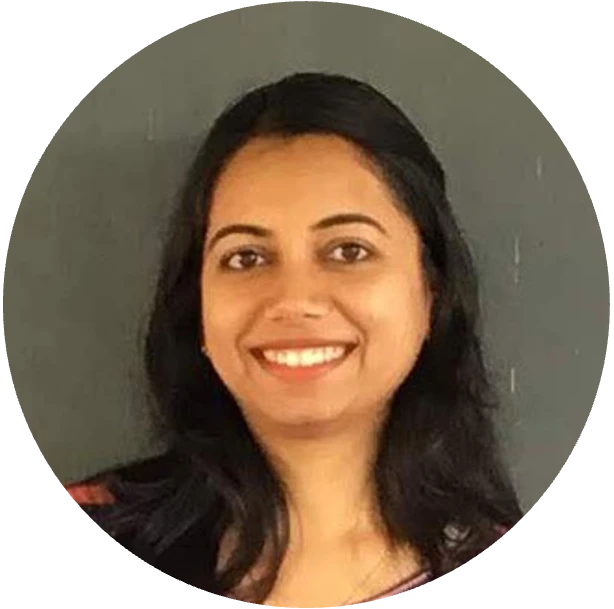
Svetlana Maurya, PhD, is director of the Sanford Burnham Prebys Proteomics Shared Resource.
Lucélia Santi, PhD, professor adjunto at the Federal University of Rio Grande do Sul, is the senior and corresponding author on the study.
Ting Huang, PhD, a scientist at Seer Inc. focused on data science and machine learning, is first author on the manuscript.
Additional authors include: